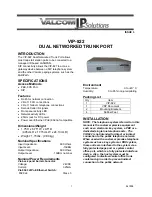
163
Predefined user roles
network-admin
Parameters
broadcast
: Specifies the network type as broadcast.
nbma
: Specifies the network type as NBMA.
p2mp
: Specifies the network type as P2MP.
unicast
: Specifies the P2MP interface to unicast OSPF packets. By default, a P2MP interface multicasts
OSPF packets.
p2p
: Specifies the network type as P2P.
peer-address-check
: Checks whether the peer interface and the local interface are on the same network
segment. Two P2P interfaces can establish a neighbor relationship only when they are on the same
network segment.
Usage guidelines
If a router on a broadcast network does not support multicast, configure the network type for the
connected interfaces as NBMA.
If any two routers on an NBMA network are directly connected through a virtual link, the network is fully
meshed, and you can configure the network type for the connected interfaces as NBMA. If two routers
are not directly connected, configure the P2MP network type so that the two routers can exchange
routing information through another router.
When the network type of an interface is NBMA or P2MP unicast, you must use the
peer
command to
specify the neighbor.
If only two routers run OSPF on a network, you can configure the network type for the connected
interfaces as P2P.
When the network type of an interface is P2MP unicast, all OSPF packets are unicast by the interface.
Examples
# Configure the OSPF network type for VLAN-interface 10 as NBMA.
<Sysname> system-view
[Sysname] interface vlan-interface 10
[Sysname-Vlan-interface10] ospf network-type nbma
Related commands
ospf dr-priority
ospf prefix-suppression
Use
ospf prefix-suppression
to disable an OSPF interface from advertising all its IP prefixes, except for
the prefixes of secondary IP addresses.
Use
undo ospf prefix-suppression
to restore the default.
Syntax
ospf prefix-suppression
[
disable
]
undo ospf prefix-suppression
















































